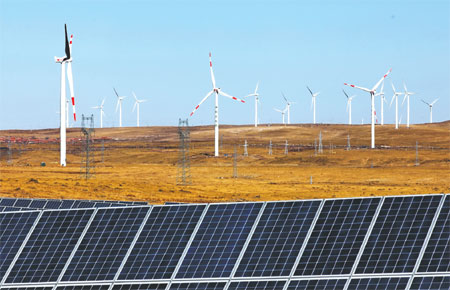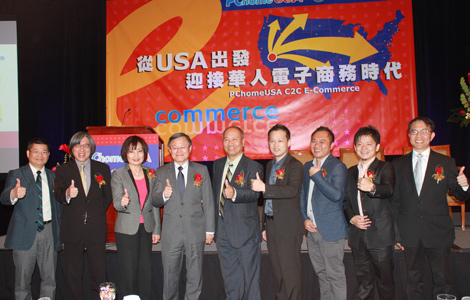A win-win game on clean energy
Updated: 2014-05-16 11:06
By Chen Weihua (China Daily USA)
|
||||||||
While competition and friction make most headlines regarding China-US relations these days, the growing cooperation in clean energy between the world's two largest economies is often unknown to the general public, CHEN WEIHUA reports from Washington.
On October 28, 2011, an Air China Boeing 747-400 took off from the Beijing Capital International Airport and conducted a demonstration flight for about two hours. One of the jet engines was powered by a 50-50 blend of Honeywell's green jet fuel and standard aviation petroleum fuel.
The biofuel was derived from jatropha, an inedible plant grown by PetroChina, one of the nation's largest state-owned oil companies, in southwest China and then refined by Honeywell.
It was part of a joint effort by Air China, PetroChina, Boeing and Honeywell to create an aviation biofuel infrastructure in China to address the growing challenges for sustainable economic growth and carbon emission.
Such cooperation between China and the US in clean energy has been expanding rapidly over the years in everything from advanced clean coal and shale gas to wind mills and nuclear technologies.
"By leveraging and combining the collective ingenuity of engineers and scientists in both the US and China, we can help unlock a clean energy revolution by developing smarter approaches to production and using energy," said Sarah Forbes, a senior associate in climate and energy program at the Washington-based World Resources Institute (WRI).
Government umbrellas
The biofuel involving the Chinese and US companies was part of the US-China Energy Cooperation Program (ECP) launched by US President Barack Obama and then Chinese President Hu Jintao during Obama's first trip to Beijing in November 2009.
Besides the sustainable aviation biofuel project, public and private partners under the ECP have engaged in programs such as the smart grid automatic-demand response pilot project, a dialogue on mercury removal standards for coal-fired power plants in China and a power plant emission retrofit feasibility study and pilot.
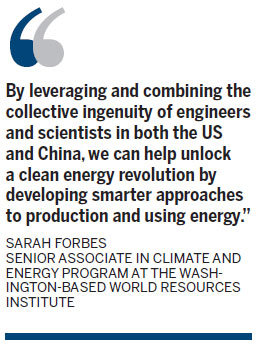
ECP itself has some 10 working groups to address different needs, such as on clean coal, clean transportation and fuel, energy efficient building and design, industry energy efficiency, energy financing and investment, smart grid, nuclear energy, shale gas and renewable energy.
Besides ECP, the two governments have also endorsed other vital clean energy collaboration programs.
The US-China Clean Energy Research Center (CERC), for example, allows researchers from China and the US to work closely on the same tasks. The program is operated as a public-private partnership on both sides.
"Approximately 1,100 researchers in the US and China are supported by the work of the CERC," Joanna Lewis, assistant professor of science, technology and international affairs at the Edmund A. Walsh School of Foreign Service of Georgetown University, said in testimony on April 25 before the US-China Economic and Security Review Commission (USCC) in Washington. The commission holds regular hearings on various subjects regarding US-China relations. .
Meanwhile, the US-China Renewable Energy Partnership (USCREP) includes road mapping renewable energy deployments in each country, holding an annual China-US renewable energy forum, and sharing best practices by bringing together scientists, entrepreneurs and policymakers from both countries.
The US-China Energy Efficiency Action Plan supports officials in both countries to develop codes and rating systems and benchmark industrial energy efficiency as well as a training program for inspectors and an annual US-China energy efficiency forum.
The US-China electric vehicles initiative supports joint-standards development and demonstration in a dozen cities.
While the above were endorsed in 2009 during Obama's first visit to China, the past year saw the establishment of the China-US Climate Change Working Group (CCWG) under Obama and the current Chinese President Xi Jinping to deepen and extend existing collaboration that spurs large-scale cooperative efforts.
The immediate result from the working group was a commitment made last July by the two governments to work on five key issues: emissions reduction from heavy-duty and other vehicles, smart-grid, carbon-capture utilization and storage, collecting and managing greenhouse gas emission data and energy efficiency in building and industry.
Bilateral governmental cooperation in clean energy can be traced to 1979 when the two countries signed the US-China Agreement on Cooperation in Science and Technology, soon after the establishment of diplomatic relations. The agreement laid the framework for subsequent energy-related cooperation between the two nations.
In 2008, the two countries launched the US-China 10-Year Framework for Cooperation on Energy and Environment, which involves multiple government agencies on both sides. It addresses issues such as clean and efficient electricity, clean and efficient transportation, clean air, clean water, and conservation of forest and wetland.
Good rationale
For WRI's Forbes, clean energy makes good sense for China and the US, the world's two largest energy consumers and greenhouse gas emitters.
Many parallels exist in the US and Chinese energy profiles. Both are continent-sized countries with geographically dispersed energy resources and with energy demand centers that are often far from energy supplies.
"Both countries currently rely heavily on fossil fuels to power their economies, primarily drawing on coal, natural gas and imported oil," Forbes said in her testimony before the USCC. Both countries seek to increase energy independence by diversifying the energy mix and ramping up domestic energy production, particularly unconventional fossil fuels such as shale gas and renewable energy technologies, according to Forbes.
Forbes believes that international collaboration, and specifically US-China collaboration, is one way to create a collaborative network and build global capacity among researchers and ultimately in the workforce.
She described it as "outdated" that China is still at an age of only "capacity building" of "technology transfer".
"China is a global leader in clean-energy investment and in clean-energy technology development and the benefits from US-China collaboration on clean energy can and will be realized by both countries," said Forbes, who leads WRI initiatives on shale gas and carbon dioxide capture and storage in China.
China's clean-energy cooperation extends far beyond the US. It has been working on a wide range of clean-energy technologies with the European Union, Australia and Canada.
Mutual benefits
For Leocadia Zak, director of the US Trade and Development Agency, many of the bilateral programs mean business and jobs for Americans.
She said that the US-China Energy Cooperation Program, or ECP, was created in part to connect US businesses to the enormous opportunities that exist in China's $1 trillion clean-technology market, as well as the significant energy investments planned by the Chinese government.
"The Chinese government intends to invest $530 billion by 2020 on smart-grid infrastructure. As the world's technical leaders in dynamic subsectors like smart grid, US industry can offer Chinese decision-makers goods and services that can help them achieve their ambitious goals," she said during her testimony.
The same is true about reducing the emissions from heavy-duty trucks. In 2012, China sold nearly 4 million commercial heavy-duty vehicles, about seven times the size of US sales. Heavy-duty trucks are notorious for consuming energy and discharging emissions. Zak believes bilateral cooperation can help China develop policies that reduce greenhouse gases and improve fuel consumption. It will also help level the playing field in trade for US businesses.
Forbes believes an intangible benefit of the cooperation is the cooperation itself. The framework under which cooperation occurs provides opportunities for businesses, government agencies, and academics within each country to engage in discussions and work jointly in ways that would not be possible otherwise.
The two countries have already reaped tangible benefits from the cooperation, such as in improving environment and creating jobs.
With assistance from the US Department of Energy Department (DOE), China enacted its first-ever energy code for rural residential buildings in May 2013.
DOE estimates that such a move could save up to 50 percent of the energy used in residences that house 700 million people, in a footprint equal to the entire US residential building sector, according to Lewis of Georgetown University.
Meanwhile, the University of West Virginia has worked with Chinese counterparts on studies of carbon storage and utilization options designed to reduce releases of carbon into the atmosphere.
One of its efforts with Shenhua - China's and the world's largest coal-mining company - has resulted in one of the first successful demonstrations of carbon capture and storage (CCS) in China, according to Jerald Fletcher, professor and director of the US-China Energy Center at the university.
Under the bilateral governmental program, the university has been working closely with Chinese counterparts in advanced coal technology.
Meanwhile, LP Amina, a North Carolina-based company, developed and patented a new coal classifier to sort pulverized coal.
While the technology could reduce nitrogen oxide emissions by up to some 15 percent and with slight efficiency improvements, customers in the US would not buy it because it had not yet been demonstrated.
Through engagement in joint research and development and workshops by the CERC's Advanced Coal Technology Consortium, LP Amina installed one of its new classifiers at the Fengtai Power Station in East China's Anhui province.
After the successful demonstration in China, LP Amina is now marketing this technology to global companies, including plants in the US.
"The technology was developed here in the United States, demonstrated in China, and is now being deployed globally," said Forbes of the World Resources Institute.
"And the innovation is creating American manufacturing jobs, with each classifier keeping 10 to 20 manufacturing workers busy for a month, and manufacturers in Michigan, Ohio and West Virginia have already been put to work building them," she said.
China, whose coal consumption accounts more than half of the world's total each year, stands to benefit from progress in clean-coal technologies. The same is true in the nuclear energy sector.
To Jane Nakano, a fellow of the energy and national security program at the Center for Strategic and International Studies in Washington, the complementary abilities of China and the US in nuclear energy provide a unique synergy and basis for increasing bilateral cooperation.
"The United States has a wealth of expertise in nuclear regulatory matters as well as strong capability in reactor design and technical innovation, yet the US nuclear industry has lost the robustness it once had in manufacturing and deploying nuclear reactors," she said. "In contrast, China has a growing nuclear energy sector with a national drive to become a global reactor supplier yet is short of regulatory expertise and technological capacity."
China has become a major player in civilian nuclear energy, according to Nakano.
With 20 reactors online, China has 29 reactors under construction, accounting for roughly 20 percent of global reactor construction. The World Nuclear Association has stated that an additional 58 reactors are being planned.
Nakano believes that the national efforts to raise non-fossil energy to 11.4 percent of total primary energy use and to reduce carbon intensity by 17 percent, both under the 12th Five-Year Plan (2011-2015), continues to drive nuclear expansion.
While the meltdown accident at Japan's Fukushima Dai-ichi Nuclear Power Station led to a pause in Chinese nuclear development and intensive inspection of the existing facilities, it has not altered China's commitment to nuclear power, according to Nakano.
Remarkable progress in the past years include the first AP-1000 nuclear reactor developed by the Westinghouse and constructed at Sanmen in Zhejiang province and Haiyang in Shandong province, both in East China.
While the first AP-1000 reactor in China is expected to be online later this decade, Nakano believes the AP-1000 represents a milestone for the US nuclear industry to gain a significant foothold in China's growing nuclear-power market.
Creating jobs
According to Westinghouse, each of its projects in China creates or sustains as many as 5,000 jobs in the US.
Quoting the safety aphorism that a nuclear accident anywhere is an accident everywhere, Nakano expressed concerns both within China and internationally about the growing gap between the rapid pace of Chinese nuclear expansion and the country's institutional capacity, both in terms of regulatory framework and human resources.
"Bilateral cooperation in the area of nuclear safety and regulations has become an important area of civilian nuclear energy cooperation between the two countries," said Nakano.
Under a bilateral protocol on nuclear safety, the US Nuclear Regulatory Commission (NRC) plays a big role in personnel training. It means that Chinese regulators are allowed to accompany US inspectors on operating reactor and reactor construction inspections in the US, as well as participating in NRC staff training at its facility in Tennessee.
Despite the clear progress of clean-energy cooperation between China and the US, Forbes from the WRI believes the cooperation can be improved by creating more collaborative networks to support innovators' needs and building capacity in the workforce. Funding in this area is still far from adequate.
She also suggested more high-level communication and engagement. She hopes that there is an institutional collaborative mechanism between the two countries that would integrate current platforms and promote information sharing among complementary efforts.
Kelly Sims Gallagher, director of the Center for International Environment and Resource Policy at the Fletcher School at Tufts University, has done extensive research on coal and climate change.
She proposes establishing a robust program of researcher exchange, one that could last six to 12 months so it could build relationships and trust and collaborative research can continue in deeper and more meaningful way.
"Exchanges should not only be in science and technology, but also in economics, policy and public acceptance research," she said.
While groundwork has been laid for further cooperation in clean energy between China and the US, Forbes likes to highlight a quote from the 2013 Joint US-China statement on climate change:
"Forceful, nationally appropriate action by the United States and China, including large scale cooperative action - is more critical than ever. Such action is crucial to contain climate change and to set the kind of powerful example that can inspire the world."
Contact the writer at chenweihua@chinadailyusa.com
|
A photovoltaic power station stands next to a wind power farm in Zhangjiakou, North China's Hebei province. Xinhua |
(China Daily USA 05/16/2014 page19)

 Finding the best way to teach Chinese
Finding the best way to teach Chinese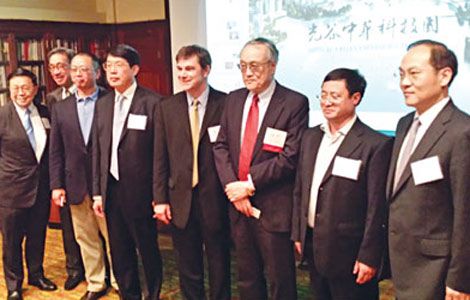
 New high-tech zone is ready
New high-tech zone is ready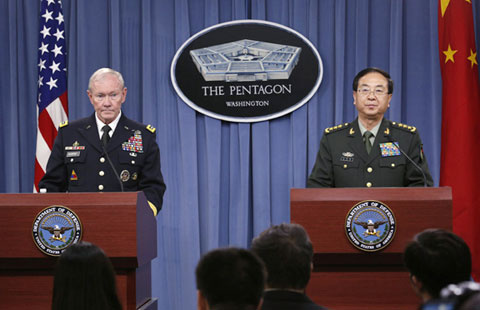
 PLA chief pays visit to US
PLA chief pays visit to US
 Red Chamber aims to put audience to sleep
Red Chamber aims to put audience to sleep
 Chinese man's killing reflects'dangerous'neighborhood
Chinese man's killing reflects'dangerous'neighborhood
 Older parents work to have children after losing their only child
Older parents work to have children after losing their only child
 Forum trends: Some "bad" habits I've picked up in China
Forum trends: Some "bad" habits I've picked up in China
 'Red Chamber' play aims to put audience asleep
'Red Chamber' play aims to put audience asleep
Most Viewed
Editor's Picks

|

|

|

|

|

|
Today's Top News
A win-win game on clean energy
China's top brass visits US military
Across America
Across Americas
Fiona Ma: The sky's the limit in politics
China, US boost military hotline
David Lampton: Up US-China interdependence
Jumei IPO on NYSE raises $245.1 million
US Weekly

|

|
